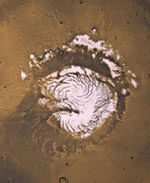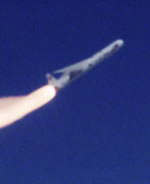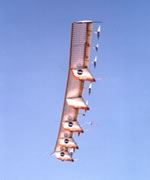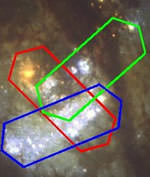Got a little extra cash and looking for the next high-flying investment opportunity? Maybe you need to look up? way up. In his book: Made in Space: Space Investor’s Guide to the Next Revolution, Kenneth Schweitzer covers a whole range of investment opportunities, from space-based manufacturing facilities to power generation and mining. Here’s Fraser’s review…
Got a little extra cash and looking for the next high-flying investment opportunity? Maybe you need to look up? way up. In his book: Made in Space: Space Investor’s Guide to the Next Revolution, Kenneth Schweitzer covers a whole range of investment opportunities, from space-based manufacturing facilities to power generation and mining.
Through the course of 250 pages, Schweitzer makes a case that the private space industry is about to really take off, thanks to maturing technologies, military and government investment, public demand, and several other factors.
Each chapter of Made in Space is devoted to a different aspect of space commercialization, from space-based mining to space tourism, and Schweitzer does a pretty good job of providing a comprehensive look at the current companies in each segment and then the future opportunities. For example, the chapter on Public Space Travel examines the basis for the space tourism industry, the two tourists who’ve already flown (Tito and Shuttleworth), and then provides an overview of several companies offering space tourism flights (now, or in the near future).
One aspect of the book that I really enjoyed is how Schweitzer takes a fairly balanced view of of space commercialization achieved so far. Like most space enthusiasts, he’s disappointed about the pace of space flight, but he’s also appreciative of the work that’s already been done. In fact, he considers many of the experiments already performed by NASA and Russia to be critical to the future of space-based manufacturing.
Although Made in Space was written to serve as an investor’s guide to space, I’m not sure it will serve that role too well. The problem is that space commercialization is based on two insanely risky ventures: space exploration and business entrepreneurship. The book covers all of the insanely risky ventures going on, but it doesn’t exactly provide any kind of analysis of the different companies involved. So, if you’re actually considering investment in a space company, you’ll want to use this book as a starting point, not a detailed financial analysis of the different companies. I don’t think you’d be able to spot the next “hot space stock” from within Made in Space‘s pages.
I also felt that the book was overly optimistic. From reading Made in Space, you get the impression that the space revolution is ready to begin; nothing’s stopping it now! This is just my opinion, but I think space commercialization isn’t going to get going without overwhelming effort from thousands of people against enormous resistance. We’re by no means “in the clear”, and a large part of this momentum will need to come from revised government policies. This is the kind of thing that only happens when thousands of people lobby the government to change the way it supports space exploration – right now the US government (and world governments in general) are showing few signs of supporting these kinds of revolutionary ventures.
Here’s a link to Made in Space from Amazon.com. And a link directly from the publisher.





